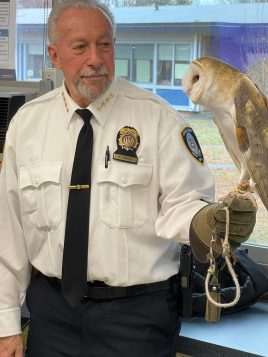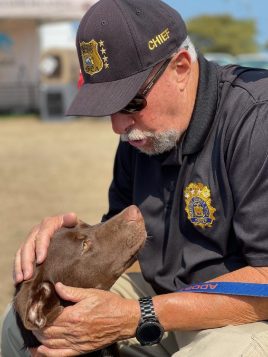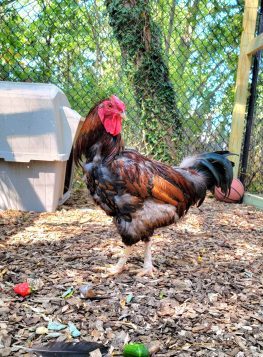By Daniel Dunaief

Even as we study evolution, we ourselves evolve over time. No, we don’t learn to fly or to breathe underwater. We change over the decades, in part because of social pressure and in part because, well, our cells, organs and experiences align to make us different decadal versions of ourselves. With that in mind, I’d like to share some snapshots from my life.
First decade:
Likes: I adored my parents (most of the time). I also appreciated the opportunity to make new friends and to play any game that involved chasing a ball.
Dislikes: long distances running, homework, dark nights, losing electricity, sitting in the middle of a station wagon with my legs cramped under me.
Favorite food: pizza and grilled cheese with ketchup. It’s not for everyone, but I loved it.
Favorite sport to play: basketball.
Favorite sport to watch: baseball.
Biggest worry: finding parents.
Second decade:
Likes: time with friends, the freedom to drive somewhere on my own (later in the decade, of course).
Dislikes: tough teachers eager to teach me too many lessons, rejections from friends, and too many questions from parents. Waiting for parents to pick me up (until I could drive). Developing an intolerance to dairy, which removed pizza, ice cream and mac and cheese from food options.
Favorite food: Good Steer burger supremes with a root beer and ballpark hot dogs.
Favorite sport to play: baseball
Favorite sport to watch: baseball.
Biggest worry: Losing parents. Getting into college.
Third decade
Likes: getting a job where someone not only paid me to do something I wasn’t sure I was qualified to do, but also sent me on planes to do it. Spending time with friends. Going on vacations with friends and family.
Dislikes: working on weekends and holidays. Going on horrible dates with people who were a little too eager to see fights where teeth got knocked out during hockey games. Then again, some of those unsuccessful dates still bring a smile to my face.
Favorite food: Thai food at a restaurant on the Upper East Side.
Favorite sport to play: volleyball.
Favorite sport to watch: baseball.
Biggest worry: Finding enough time to exercise.
Fourth decade:
Likes: enjoying the miraculous connection that comes from meeting girlfriend/wife. Listening to my wife laugh and seeing her smile. Holding my son and daughter and feeling them relax enough to go to sleep.
Dislikes: trying to figure out how to handle when children got sick, needing something we didn’t have, and packing enough stuff in the diaper bag and the car for needy children.
Favorite food: Who tastes food at this point? We inhaled it in between picking up the food the kids spilled on the floor or in the car.
Favorite sport to play: softball in Central Park.
Favorite sport to watch: my daughter’s active and exciting volleyball matches and my son’s soccer games. I knew nothing about soccer, so I could just be a supportive father and fan without offering unwelcome and unhelpful advice.
Biggest worry: How to keep kids healthy.
Fifth decade:
Likes: holidays, vacations and not needing to stand over the kids when they got too close to the water. Hooray for independent swimming.
Dislikes: driving everywhere with kids and their friends who made the car stink so badly at times that I opened windows in freezing temperatures. Watching kids disappear into their cell phones.
Favorite food: fresh fish on vacations.
Favorite sport to play: I barely played anything. I coached kids and bobbed and weaved between the entitled requests from parents.
Favorite sport to watch: daughter’s volleyball and son’s baseball.
Biggest worry: helping steer kids in the right direction.
Sixth decade:
Likes: time with family and friends, days when pain in my hip stays the same or, rarely, is less than the day before.
Dislikes: not knowing how to handle important technology, an awareness that I’m older than my friend’s parents were when I was growing up, and I thought they were old.
Favorite food: anything that doesn’t keep me up at night.
Favorite sport to play: baseball or anything that doesn’t cause pain the next day.
Favorite sport to watch: baseball.
Biggest worry: the speed at which each day, month and year passes. The prevalence of anger for its own sake and the health of the planet our children are inheriting.




































 “We celebrate a little bit differently, with more focus on the family gathering,” he said. Tang chronicled the two-year history of the temple. After its acquisition in 2020, he said the temple’s leadership has gradually expanded its activities.
“We celebrate a little bit differently, with more focus on the family gathering,” he said. Tang chronicled the two-year history of the temple. After its acquisition in 2020, he said the temple’s leadership has gradually expanded its activities. The new year event was not only a way to honor Vietnamese heritage and customs. Several prominent Buddhist clergy members celebrated and supported their Vietnamese peers. This forum served to promote Buddhist teachings.
The new year event was not only a way to honor Vietnamese heritage and customs. Several prominent Buddhist clergy members celebrated and supported their Vietnamese peers. This forum served to promote Buddhist teachings. “This technology is so helpful for us,” he said, adding, “We use it for our ‘dharma’ purpose: to teach others and learn from others, to discuss, and for many other things.”
“This technology is so helpful for us,” he said, adding, “We use it for our ‘dharma’ purpose: to teach others and learn from others, to discuss, and for many other things.”
 Paul and Gerri
Paul and Gerri
 Ashley Smith,
Ashley Smith, Keith, Lauren and Christine Kmiotek, Brooklyn
Keith, Lauren and Christine Kmiotek, Brooklyn Chuck Sullivan, Manorville
Chuck Sullivan, Manorville




